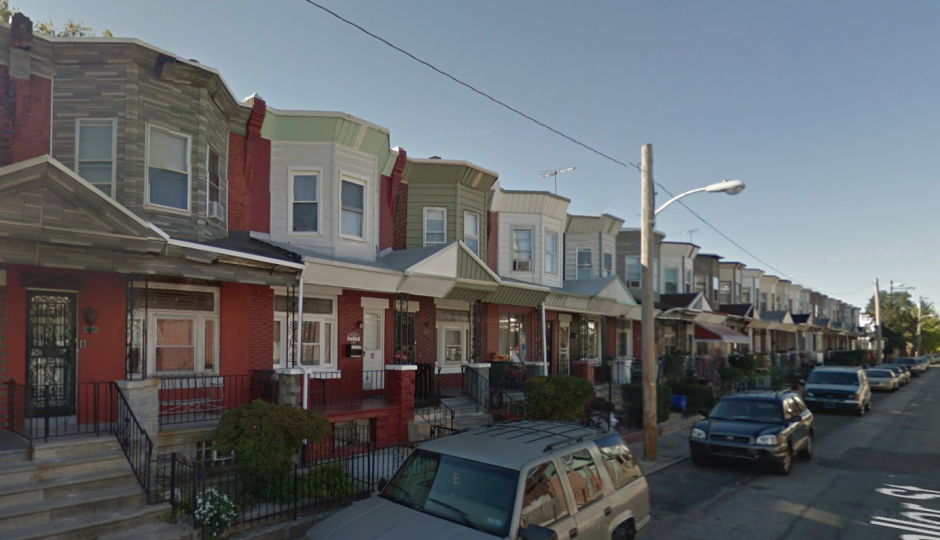Owning Is Even Cheaper Than Renting Now, Report Says

Affordable rowhomes in West Philadelphia. | Google Streetview
It’s long been a truism that for comparable housing, owning is cheaper than renting if you can afford the upfront costs. A new study of housing affordability and social mobility from Zillow concludes that for most Americans, and in the Philadelphia metro housing market, that’s even more the case now than before the housing market bubble burst in 2008. And while that’s great news for homeowners, it’s not so hot for the region’s poorest residents, who disproportionately rent their homes.
According to Zillow’s data, homeowners in the Philadelphia area could expect to spend 14.5 percent of their income on their monthly mortgage payments at the end of 2015. That’s down from 20.3 percent in the pre-bubble years and slightly below the national figure of 15 percent.
On the other hand, renters could expect to pay 29.2 percent of their income on rent at the end of 2015, up from 21.4 percent in the pre-bubble years and close to the national figure, which is just below 30 percent.
The ownership/rental gap was even wider in the city itself at the end of 2015. While city homeowners could expect to pay 13.6 percent of their income towards their mortgage, city renters were paying 43 percent of theirs towards their rent.
The Zillow report “The U.S. Housing Affordability Crisis: How a Rent and Low-Income Problem is Becoming Everyone’s Problem” argues that the growing affordability gap between owning and renting, and the failure of incomes to keep pace with rising rents, especially at the lower end of the income scale, are creating new barriers to upward mobility for lower-income Americans.
And within this region, those barriers may be even higher depending on where one lives. Residents of impoverished Camden, for instance, pay a whopping 71 percent of their income on rent, while those in affluent Medford Lakes pay only 25 percent. (The 12-percentage-point gap between ownership and renting in Medford Lakes is one of the smallest in the region.)
According to research conducted by the Harvard Equality of Opportunity Project, the Philadelphia region has historically offered below average opportunity for upward mobility to children from poorer families. Zillow’s report on the link between housing affordability and social mobility, which draws on that research, argues that the growing unaffordability of homes due to both rising house values and rising rents are narrowing those avenues of upward mobility even further.
Zillow’s analysts predict that increases in both house values and rents will slow down over the next few years. That will be cold comfort for low-income owners and renters struggling to keep up, though.


